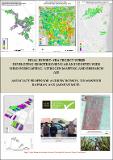| Abstract | The science of Earth Observation (EO) is a rapidly developing discipline that has seen an unprecedented rise in remote sensing technologies and application development, including those in agriculture. The Australian sugarcane industry has seen a steady increase in the development and adoption of remote sensing applications over the last decade, predominantly as a result of investment by SRDC and then Sugar Research Australia (SRA). SRA project (DPI025), with collaborative support from Australia's sugar mills, grower's, research institutions and extension agencies, has been at the forefront of this evolution, evaluating modern remote sensing technologies and novel analysis methodologies for improved in-season yield forecasting and Nitrogen management, both issues identified as priorities by the industry. Accurate yield forecasting at the regional level is vital for the Australian sugar industry as it supports decision making processes including harvest scheduling, product handling and forward selling. At the farm scale, accurate yield mapping provides growers with a stronger understanding of in-crop variability, both spatially and temporally, thus supporting the adoption of precision agricultural practices to maximize productivity. Currently, yield forecasting within the Australian sugarcane industry is undertaken by visual inspection or destructive sampling by either growers or mill funded productivity officers. Although relatively accurate, these methods are labour intensive and are subject to the influences of varied seasonal climatic conditions, crop age and human error. Remote sensing technologies have evolved across many cropping systems as an accurate 'tool' for measuring in-season performance and for the prediction of yield, pre- harvest. This project, built on the initial findings of DPI021, further developed regional yield prediction algorithms derived from SPOT satellite imagery for 11 growing regions: Broadwater, Harwood, Condong, Isis, Bundaberg, Maryborough, Burdekin, Herbert, Tully, South Johnstone and Mulgrave); investigated novel statistical methods for improving prediction accuracies at the block level; and investigated time-series remote sensing based models for improved forecasting accuracies earlier in the growing season. |

